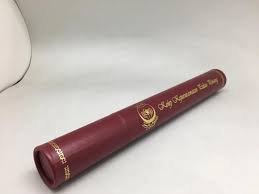How Often Should I Inspect a Cylinder Case for Wear and Tear?
A cylinder case is the component that encases and supports the cylinders within an engine or mechanical system. It ensures proper alignment and protection of internal parts, including pistons,

What Is a Cylinder Case?
A cylinder case is the component that encases and supports the cylinders within an engine or mechanical system. It ensures proper alignment and protection of internal parts, including pistons, valves, and seals. This structural component is critical for maintaining engine efficiency and preventing damage to delicate mechanisms.
Why Inspect a Cylinder Case?
Regular inspection of a cylinder case is essential for several reasons:
- Safety: Damaged cylinder cases can lead to catastrophic engine failure, endangering operators and causing costly downtime.
- Performance: Wear and tear can reduce the efficiency of an engine, leading to lower output and increased fuel consumption.
- Cost Savings: Early detection of issues can save money on major repairs or replacements down the line.
- Longevity: Routine maintenance helps extend the lifespan of your equipment.
Factors Affecting Inspection Frequency
The frequency of cylinder case inspections depends on various factors. Let’s explore these in detail.
Type of Equipment
Different types of machinery have varying levels of stress on their cylinder cases:
- Automotive Engines: Require regular checks during scheduled maintenance.
- Industrial Machinery: May need frequent inspections due to constant heavy-duty use.
- Small Equipment: Such as compressors or power tools, generally require less frequent inspections.
Operating Conditions
Harsh conditions, such as high temperatures, dusty environments, or exposure to corrosive materials, can accelerate wear and tear. Equipment used in extreme conditions should be inspected more often.
Usage Frequency
Machines that operate daily or for extended hours accumulate wear faster than those used occasionally. High-usage equipment should have a stricter inspection schedule.
Maintenance Practices
Adhering to a consistent maintenance routine helps identify issues early and reduces the need for frequent inspections. Poor maintenance habits, on the other hand, increase the likelihood of damage.
How Often Should You Inspect a Cylinder Case?
General Guidelines
While the specific inspection schedule may vary, here are some general recommendations:
|
Type of Equipment |
Inspection Frequency |
|
Automotive Engines |
Every 10,000 to 15,000 miles |
|
Industrial Machinery |
Every 500 operational hours |
|
Small Tools and Equipment |
Annually or every 100 hours of use |
High-Performance Machinery
For high-performance engines or machinery, inspections may need to occur as frequently as every 250 hours of operation or after each major project. Always consult the manufacturer’s guidelines for specific recommendations.
Signs of Wear and Tear in a Cylinder Case
Knowing what to look for during an inspection is critical. Common signs of wear and tear include:
- Cracks or Fractures: Visible damage to the case structure.
- Corrosion: Rust or oxidation, particularly in older equipment.
- Warping: Distortion of the cylinder case due to excessive heat or pressure.
- Leaks: Oil or coolant leaks near the cylinder case.
- Unusual Noises: Knocking or rattling sounds from the engine.
If you notice any of these signs, immediate action is necessary to prevent further damage.
Step-by-Step Guide to Inspecting a Cylinder Case
Required Tools and Equipment
Before starting, gather the following tools:
- Flashlight
- Inspection mirror
- Torque wrench
- Cleaning materials
- Measurement tools (e.g., calipers, micrometers)
Inspection Process
- Turn Off and Cool Down the Equipment: Ensure the machinery is off and has cooled down to avoid burns or other injuries.
- Clean the Exterior: Remove dirt, grease, and debris from the cylinder case.
- Visually Inspect for Damage: Use a flashlight and inspection mirror to check for cracks, corrosion, or other visible issues.
- Check Bolts and Fasteners: Ensure all bolts and fasteners are properly tightened.
- Measure Tolerances: Use calipers or micrometers to check for wear that may affect performance.
- Inspect Seals and Gaskets: Look for leaks or worn seals around the cylinder case.
What to Do If You Detect Wear and Tear
If you identify any issues during your inspection, follow these steps:
- Document the Damage: Take notes and photos for reference.
- Consult the Manufacturer: Check the equipment manual for repair or replacement guidelines.
- Repair or Replace: Depending on the severity of the damage, you may need to:
- Replace seals or gaskets.
- Weld or patch minor cracks.
- Replace the entire cylinder case if the damage is extensive.
- Test the Equipment: After repairs, run the equipment to ensure proper functionality.
Tips for Preventing Cylinder Case Damage
Prevention is always better than cure. Here are some tips to protect your cylinder case:
- Follow Manufacturer Guidelines: Stick to the recommended maintenance and inspection schedule.
- Use High-Quality Lubricants: Proper lubrication reduces wear and minimizes friction.
- Avoid Overloading Equipment: Operate within the recommended load limits to prevent undue stress.
- Store Equipment Properly: Protect machinery from harsh environmental conditions when not in use.
- Train Operators: Ensure operators are properly trained to handle the equipment.
Conclusion
Inspecting a cylinder case for wear and tear is a vital part of equipment maintenance. By understanding the factors that affect inspection frequency, recognizing the signs of damage, and following a structured inspection process, you can extend the life of your machinery and prevent costly breakdowns. Whether you’re dealing with a car engine, industrial machine, or small tool, regular checks ensure optimal performance and safety. Remember, a little effort today can save you from significant headaches tomorrow! When it comes to equipping your lab for groundbreaking research, certifiedmtp.com stands as a trusted partner, ready to contribute to your next scientific breakthrough with their exceptional products and services.
What's Your Reaction?











